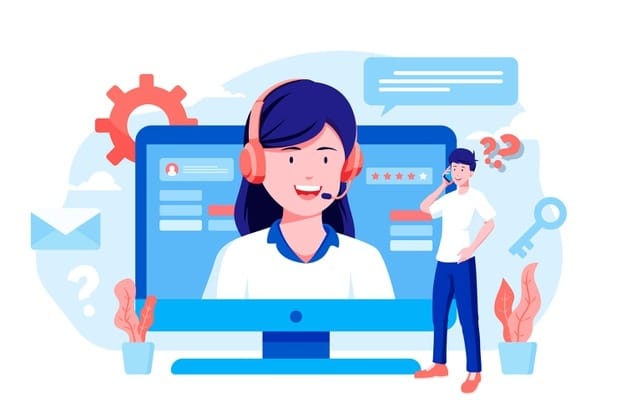Customer complaints are a double-edged sword.
On one hand, they can leave you embarrassed and demotivated. On the other hand, they can offer you rich insights into your customers’ pain points and also allow you to align your brand offerings to customer expectations.
However, complaints also bring a load of operational and process overheads, and if not resolved properly, the situation can snowball into a worse situation.
While you might think otherwise, getting complaints means that your customers are still interested in doing business with you. Studies reveal that 96% of customers never complain and 91% of customers simply leave because of poor services.
This blog will discuss how to reduce customer complaints while keeping your customers happy and turning them into loyal brand advocates.
Let’s begin by learning – Why do customers complain?
Why do customers complain?
Customers are unique people who have different tastes, personalities, and expectations from your brand. What might affect one customer may not necessarily have the same impact on the other.
It is important to understand that customers complain because of a variety of reasons. In many cases, customers might be facing trouble using your products or services, or stuck with faulty ones. Customer complaints can also stem from the issues or concerns with the company’s employees, strategies, policies, or processes.
Some other major reasons customers complain are:
- Poor customer service or troubleshooting
- Siloed support channels
- Hidden costs
- Lack of sufficient information
- Inattentive employees
- Lack of quick and reliable support
- Unresolved problems
Now that we know some of the common reasons for complaints, let us explore some ways to reduce them.
10 Effective Ways to Reduce Customer Complaints

(Image Source: Freepik.com)
1. Improve first call resolution
The first step to providing exceptional customer service is to improve first call resolution or FCR. First call resolution or first contact resolution measures your ability to handle and resolve customer complaints across different channels in one go.
Industry-standard for FCR is approximately 74%, and an FCR rate below 40% is considered poor.
If you solve customer complaints in the first interaction, you’ll generate a positive impression on the minds of your customers. With fewer repeat requests, you will also be able maximize your support staff’s productivity.
2. Leverage the latest technology
It is impossible to deliver exceptional customer support without using any technology because manually managing customer interactions can make things go haywire.
Hence, it is important to deploy reliable, smart, and functionality-rich customer automation to keep the support standards high. There are many smart customer service technologies, such as CRM, knowledge base, helpdesks, call-back tools, and cloud-based call center software.
Using the latest technology moves your team in the right direction and enables you to minimize your query resolution time. When you solve more queries in less time, you’ll be able to reduce customer complaints.
3. Track complaints using help desk software
Smart customer support tools like help desk software can automatically convert all customer queries into tickets with unique IDs. The software also offers multiple complaint management features.
For instance, agents can prioritize complaints, sort tickets using tags, and escalate them to the right people. As every incoming customer complaint now ends up in a central query window, that is visible and accessible to all, you’ll never miss any query.
Intuitive help desks tools also offer built-in live chat and canned responses to resolve repetitive queries more efficiently. You also get features such as automated ticket routing, real-time agent escalation, smart reports, and many team collaboration capabilities.
With real-time complaint tracking, you can resolve issues faster and prevent additional complaints from the same customers.

(Image Source: Freepik.com)
4. Do not be rude and show empathy
Customer support agents are also humans, and it is highly likely for them to get angry or frustrated while dealing with an angry customer. However, a heated discussion can lead to a poor experience for both the customer and the representative.
When customers sense an agent being rude, most of them cut the call in-between and leave with a very bad impression. But, some of them escalate the matter by sharing a negative word about your business online. This will require more strenuous containment actions, and you’ll have to spend more effort and resources in resolving the issue.
Educate and train your support staff to handle angry customers with empathy and patience so that every call gets resolved in minimum time.
5. Promise only what you can deliver
It’s very normal for brands to make grand promises regarding their products and services. And, this condition applies to industry giants like Amazon as well, for example, the Amazon Prime Day Fail and the United Airlines Fiasco.
While brands like Amazon can survive such disasters, not every brand has the same resilience.
Hence, never make false promises or commit a level of quality that your products cannot deliver. One thing that turns off your customers the most is unmet expectations.
For instance, none of your customers will be happy if they bought a car scratch remover claiming to make your car shine like a star but ends up failing terribly.
Apart from generating hundreds of complaints, you’ll generate a wave of negative publicity that can harm your brand’s reputation.

(Image Source: Freepik.com)
6. Deliver omnichannel support
Modern customers are digitally empowered and use multiple channels to seek support. SMS, calls, emails, chat, remote troubleshooting, social media, and self-service — the list is quite long.
In order to reduce customer complaints, it is important to offer omnichannel support. Your ability to resolve customer queries everywhere means you’ll have fewer calls or email-based queries to resolve.
Also, using automation for customer queries can also significantly lower the number of tickets.
7. Offer self-service
Self-service modules allow your customers to resolve basic and less complex issues themselves. They don’t have to wait for your staff to get in touch and present a solution.
Many leading complaint management help desk tools allow you to convert customer interactions and conversations into help articles. By sharing them with your customers and employees, you can achieve great results.
In fact, your new agents can refer to them and learn how to solve complex queries, before opting for expert agent escalation. Likewise, your customers can directly look for answers and solve their problems.
You can also allow your customers to share their results on the community portal to improve the quality of troubleshooting information available there.
8. Optimize your channels
It’s normal for businesses to have multiple online channels, such as websites, web apps, mobile apps, and social media profiles. However, merely having these channels is not enough.
In order to get the best value out of them, you have to ensure that they are optimized as per your customer preferences.
Otherwise, they can generate heaps of customer complaints regarding:
- Usage – How to place an order using your web app?
- Purchase – I cannot find my order history on your website.
- Check-out – I have created a wishlist that is not visible now, what to do?
There can be countless other such queries.
Website and app optimization allows you to align every functionality as per the visitor preferences and general browsing behavior. Hence, optimization is one of the best ways to reduce customer service complaints.

9. Gather customer feedback
No one can describe the sickness better than a patient. Likewise, no one can tell you the problems with your products and services better than your customers.
Hence, conduct surveys for a thorough pulse check of your customers and collect their valuable feedback.
Surveys and proactive feedback collection allow you to understand the customer pain points. You can learn what features, products, or services they like the most and the ones that need improvement. You can also gather feedback for market research regarding a new product or service policy change for taking more strategic business decisions.
As you understand the troubles of your customers and fix them, you will have fewer complaints to resolve.
10. Improve the internal support operations
A flawless and highly efficient support system kick-starts the transformation of your customer services.
You can solve more queries in lesser time by:
- Creating canned responses for repetitive queries
- Presenting accurate solutions in the first interaction
- Delivering self-service modules
- Using chatbots and live chats for solving complex queries in one go
However, creating such a reliable and efficient support system requires a perfect mix of human staff, training, and advanced automation. Using AI and ML-powered chatbots cuts down the support staff’s burdens and allows them to focus on more complex issues.
Also, you can use data-driven actionable reports to monitor your team’s performance and productivity and learn more about your customers.
Reduce Customer Service Complaints to Get Happier Customers
When it comes to customer success, there are no shortcuts. You have to use different tactics and create a balance between human talent and technology to reduce the number of customer complaints.
Also, never get scared of your customer complaints. Consider them as important lessons that show you the way to make your products and services better.
Make sure you have the right tools, the right task force, and the right mindset to make your customers happy and satisfied.
Keep learning from mistakes and never stop making your brand better. Good luck!
Originally published May 01, 2021, updated Dec 30, 2022





